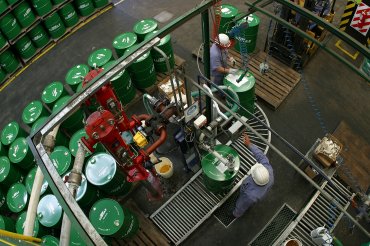
Despite economic slowdown and political uncertainty that has hindered key countries in the region, demand for finished lubricants in Latin America and the Caribbean is expected to increase a total of 5.4 percent to 3.9 million tons in 2020, consultancy Kline & Co. forecast.
After a period of minimal economic growth due to collapses in commodity prices, forecasts call for better times, thanks to increased exports and trade deals with North America, Europe and Pacific Rim countries. However, this recovery will not be uniform in each country, said Sharbel Luzuriaga, project lead for Klines Energy Practice.
While Mexico and countries in Central America will benefit from lower crude oil prices and their proximity to the United States, growth will be modest in South America, Luzuriaga stated in a webinar Nov. 16. Thats due to uncertainty about Brazils economy and the regions dependency on importing commodities from China, which itself has experienced an economic slowdown in the past three years.
Overall lube demand volume in Latin America and the Caribbean was estimated at 3.7 million metric tons in 2015, with the biggest segments being heavy-duty and passenger car motor oils. Conventional multigrade PCMO dominates the overall Latin American market, accounting for more than three-fourths of the total PCMO demand in the region, said Luzuriaga.
Multigrades, such as 15W-40 and -50, dominate the heavy-duty motor oil sector in Latin American market, accounting for more than half of HDMO demand in the region. Such products are expected to become even more popular with revival of commercial transportation fleets, he mentioned.
However, the market shows high penetration of lower-quality engine oils due to aging car parcs in certain countries and the presence of counterfeit products. This has also [resulted in] the low penetration of synthetics, which is also associated with overall poor consumer awareness on the key benefits of synthetics, as well as price sensitivity and other factors, Luzuriaga observed.
Even so, new cars sales offer hope of a shift toward higher-margin lubes. There is an ongoing rejuvenation of the passenger car population within the region. This fact paves the road to higher penetration of superior quality, light-viscosity grades into Latin America and the Caribbean, he added.
Industrial lubricants accounted for approximately 1.4 million tons of lubricants consumed in the Caribbean and Latin America in 2015. Some of the biggest end-user industries include agriculture, food processing, mining and light manufacturing of products such as textiles, Luzuriaga said.
Hydraulic fluids are one of the most consumed industrial lubricants behind process oils, according to Kline. Although we consider that hydraulic oils are used across a wider spectrum of industrial sectors, they are clearly strong in the mining machinery sector, which is the powerhouse of economies like Chile and Peru, but also Brazil and Mexico, Luzuriaga noted.
Brazil remains the largest contributor to Latin America and the Caribbeans GDP, alongside Mexico and Argentina. Together, they account for more than 60 percent of total finished lubricant demand in the region, Kline found.
Last year, Brazils lubricant demand was estimated at 1.3 million tons, according to Sergio Rebelo, managing director for Klines affiliate company in Latin America, Factor de Soluo. Although the country has been experiencing a retraction in lubricant demand since 2014, Luzuriaga predicted positive growth for the near future.
By 2018, the market is expected to start recovering, and this would be in line with the improvement of this economy, as well as the stabilization of the domestic political scene, he added.
In Brazil, around 60 percent of lube demand is generated by automotive and motorcycle oils. PCMOs remain the fastest-growing segment through 2025 followed by process oils, industrial engine oils, motorcycle oils, HDMOs and hydraulic fluids, according to Klines data.
The second-largest market is Mexico, which is experiencing modest growth after an economic slowdown in the 2013 to 2016 period, said Luzuriaga. Kline estimated Mexicos lubricant demand at a little over 500,000 tons in 2015.
In terms of finished lubricant demand by product type, Mexico, like Brazil, has a higher participation of passenger car motor oils, followed by HDMOs and hydraulic fluids, which gives an idea about the level of motorization and the manufacturing industry in the Mexican economy, he said.
Industrial lubricants are experiencing the most growth in Mexico, with hydraulic, metalworking, and hydraulic tractor fluids leading the way, followed by consumer and commercial automotive lubes, stated Luzuriaga.
Argentina is the third-largest market in Latin America and the Caribbean in terms of volumetric demand for finished lubricants, with around 292,000 tons consumed in 2015, according to Claudio Pereira of Brazilian consultancy LubeKem. Kline forecasts stagnant growth for the country in the coming years.
In Argentina, we see a minimal growth within the next five to 10 years, primarily due to the pullback in the consumer automotive segment, as well as uncertainty in the political arena. There is a lot of doubt and uncertainty in the long-term effects on the economy that the reforms by the new administration will have, said Luzuriaga.
The key growth products for Argentina through 2025 will be in the industrial sector, particularly hydraulic fluids, hydraulic tractor fluids and gear oils, followed by little growth for HDMOs.
Klines study is titled Opportunities in Lubricants: Latin America and Caribbean Market Analysis.

Photo: Petrobras